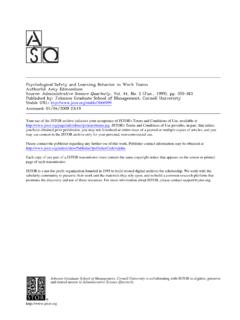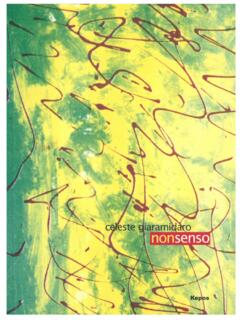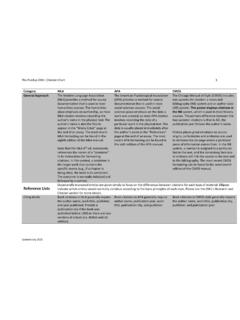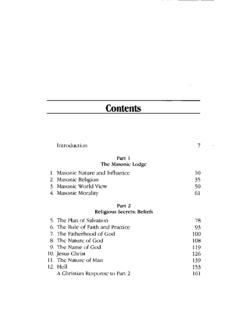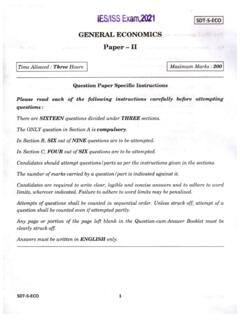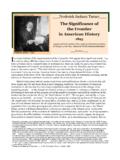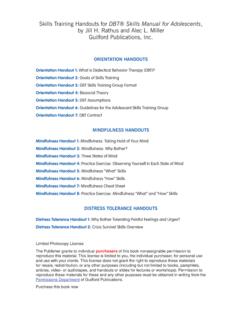Transcription of where do we go from here - Uni-Five
1 where do we go from hereApril 4, 1968: Rev. Martin Luther King, Jr., just prior to making his final public appearance to address striking Memphis sanitation workers. King was assassinated later that day outside his motel room. (AP/Wide World Photos) where Do We Go from hereChaos or Community?martin luther king, pressbostonbeacon press25 Beacon StreetBoston, Massachusetts 02108-2892 Beacon Press books are published under the auspices of the Unitarian Universalist Association of Congregations. No part of this book may be used or reproduced in any manner whatsoever without written permission except in the case of brief quotations embodied in critical articles and reviews.
2 For permission or for more information, contact Writers House, 21 West 26th Street, New York, NY do we go from here : chaos or community? Copyright 1968 by Martin Luther King, Jr. Copyright renewed 1986 by Coretta Scott King, Dexter King, Martin Luther King III, Yolanda King, Bernice King. All rights reserved. Introduction copyright 2010 Vincent Association With Mother to Son from the collected poems of langston hughes by Langston Hughes, edited by Arnold Rampersad with David Roessel, associate editor. Copyright 1994 by the Estate of Langston Hughes. Used by permission of Alfred A. Knopf, a division of Random House, Inc. This edition of where Do We Go from here is based on the 1967 edition published in the United States by Harper & Row Publishers, Inc.
3 Some spelling and punctuation have been adjusted, and obvious errors have been in the United States of America13 12 11 10 8 7 6 5 4 3 2 1 Composition by Wilsted & Taylor Publishing ServicesLibrary of Congress Cataloging-in-Publication Data can be found on page the committed supporters of the civil rights movement, Negro and white, whose steadfastness amid confusions and setbacks gives assurance that brotherhood will be the condition of man, not the dream of manA special note of thanks is due Hermine I. Popper, whose editorial skills and warm spirit of cooperation contributed greatly toward the completion of this by Vincent Harding ixForeword by Coretta Scott King xxiiiIWhere Are We?
4 1 IIBlack Power 23 IIIR acism and the White Backlash 71 IVThe Dilemma of Negro Americans 109 VWhere We Are Going 143 VIThe World House 177 Appendix: Programs and Prospects 203 Notes 215 Index 217ixIntroductionhaving shared a precious friendship with Martin King during the last ten years of his life, I was very pleased to learn that Beacon Press was return-ing to its important role as a publisher of his book-length works. Then, when I was asked to write the introduction for this new edition of King s fourth book, many powerful memories flooded my being. First and most important was my recollection of how determined Martin was to be fully and creatively engaged with the living history of his time, a history he did so much to help create but also a dangerous and tumultuous history that shaped and transformed his own amazingly brief yet momentous searching this position of radical engagement it would have been relatively easy for King, if he chose, to confine his pub-lished writing to telling the powerful stories of the experi-ences he shared almost daily with the magnificent band of women, men, and children who worked in the black-led Southern freedom movement.
5 Recounting how they strug- gled to transform themselves, their communities, this nation, and our world. Instead, going beyond the stories, King in-sisted on constantly raising and reflecting on the basic ques-tions he posed in the first chapter of this work where Are x | introductionWe? and in the overall title of the book itself, where Do We Go from here : Chaos or Community? (Always present, of course, were the deepest questions of all: Who are we? Who are we meant to be?)These are the recognizable queries that mature human beings persistently pose to themselves and to their com-munities as they explore the way toward their best pos-sibilities. Not surprisingly, such constant probing toward self-understanding was a central element of King s practice when he was at his best.
6 Indeed, it was the urgent need for such self-examination and deep reflection on the new American world that he and the freedom movement helped create that literally drove King to wrestle publicly and boldly with the profound is-sues of this book. Ironically, it was almost immediately after the extraordinary success of the heroic Alabama voter-regis-tration campaign which led to the Selma-to-Montgomery march, and the follow-up congressional passage of the 1965 Voting Rights Act that King realized he had to confront a very di cult set of emerging American realities that de-manded his best prophetic interpretation and his most cre-ative proposals for the most immediate and symbolic energizing event came just days after President Lyndon Johnson signed the hard-won historic Voting Rights Act, when the black community of Watts, in Los Angeles, exploded in fire, frus-tration, and rage.
7 When King and several of his coworkers rushed to Watts to engage some of the young men who were most deeply involved in the uprising, they heard the youth say, We won. Looking at the still smoldering embers of the local community, the visitors asked what winning meant, and one of the young men declared, We won because we made them pay attention to us. introduction | xiBuilding on all of the deep resources of empathy and compassion that seemed so richly and naturally a part of his life, King appeared determined not only to pay attention but to insist that his organization and his nation focus themselves and their resources on dozens of poor, exploited black com-munities and especially their desperate young men, whose broken lives were crying out for new, humane possibilities in the midst of the wealthiest nation in the world.
8 Speak-ing later at a sta retreat of the Southern Christian Leader-ship Conference, King expressed a conviction that had long been a crucial part of what he saw when he paid attention to the nation s poorest people. He said, Something is wrong with the economic system of our nation.. Something is wrong with capitalism. Always careful (perhaps too careful) to announce that he was not a Marxist in any sense of the word, King told the sta he believed there must be a bet-ter distribution of wealth, and maybe America must move toward a democratic socialism.. This seemed a natural direction for someone whose ultimate societal goal was the achievement of a nonviolent beloved community.
9 But a major part of the white American community and its mass media seemed only able to condemn Negro violence and to justify a white backlash against the continuing attempts of the freedom movement to move northward toward a more perfect union. (King wisely indentified the fashionable backlash as a continuing expression of an antidemocratic white racism that was as old as the nation itself.)Meanwhile, even before Watts, King and the SCLC sta had begun to explore creative ways in which they could expand their e ort to develop a just and beloved national community by establishing projects in northern black ur-ban neighborhoods. (The Student Nonviolent Coordinating Committee, or SNCC, the other major Southern movement xii | introductionorganizing force, was involved in similar Northern explora-tions by the mid-1960s, but both organizations were ham-pered by severe financial di culties.)
10 Partly because of some earlier contacts with Chicago-based community organizers, King and SCLC decided to focus on that deeply segregated city as the center of their expansion into the anguish of the North. By the winter of 1966, SCLC sta members had begun organizing in Chicago. At that point King decided to try to spend at least three days a week actually living in one of the city s poorest black communities, a west-side area named Lawndale. From that vantage point, working (some-times uncomfortably) with their Chicago colleagues, King and SCLC decided to concentrate their attention on a con-tinuing struggle against the segregated, deteriorating, and educationally dysfunctional schools; the often dilapidated housing; and the disheartening lack of job book must be read in the urgent context of King s di cult experiences in Watts and Chicago, which seemed more representative of the nation s deeper racial dilemma than were the Southern battlegrounds of Selma and Mont-gomery.
